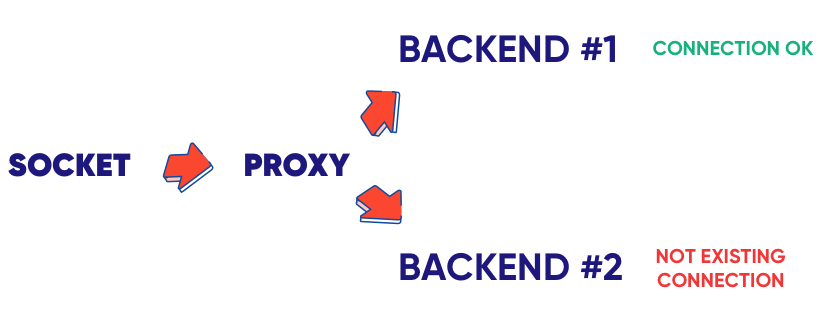# Websocket Notes
The WebSocket protocol is a modern chat messaging protocol.
It provides a persistent channel that sends text and binary data in both directions (full-duplex).
The data can even be sent simultaneously, if needed.
While originally designed to facilitate the communication between a server and browser, WebSocket can be (and widely are) used in mobile apps.
# WS vs HTTP
HTTP and WebSocket both are communication protocols used in client-server communication.

| Connection via WS | Connection via HTTP |
|---|---|
| Bi-directional communication | Unidirectional communication |
| Connection is kept alive untile terminated by client or server | Connection is terminated after request/response |
| Real time data is received on a single communication channel & can be continuously updated | HTTP data requests use simple RESTfull API. They send a ome-tine current state response for a query |
| Best used for applications in need of quick connections & realtime data | Best used for applications that dont reqire quick, 2-way connections |
| E.g: crypto market cap, multiplayer game, collaborative platform, messaging app | E.g: Browser search, email, social media updates, final game scores, ... |
# WS vs SSE
| Feature | WS | SSE |
|---|---|---|
| Communication Direction | wo-way (full duplex) | One-way (server to browser) |
| Complexity | More complex | Simpler |
| Data Format F | lexible (text and binary) | Primarily text-based |
# WS vs XMPP
XMPP (Extensible Messaging and Presence Protocol) is an open standard communications protocol that allows for transmitting XML fragments between a server and client. A client, in this case, would be a browser or a mobile app. XMPP is one of the oldest and most widely supported instant messaging protocols. It has been in use for more than two decades.
| Pros of XMPP | Pros of WS |
|---|---|
| An open, decentralized standard that makes it extensible & flexible | A persistent connection which makes it one of fastest transfer protocols |
| Great securtiy features such as authentication, authorization, and encryption | Multiple users can be connected through a single connection - lowering latency |
| Two decades of use & widespread support | can send any binary or text-based data type |
| Can stack with other protocols such as Websocket to remove some limitations | Extensible & flexible - can connect multiple types of protocols together |
| Cons of XMPP | Cons of WS |
|---|---|
| Not optimized for transfering binary data | Fewer built-int security measures than XMPP |
| Decentralized architecture emans slower transmission speed | Doesnt provide any messaging or presense functionality & requires an additional chat protocol to provide these functionalities |
# Horizontal Scalable
# Issue #1: State
Start with the HAProxy
defaults
mode http
option http-server-close
timeout connect 5s
timeout client 30s
timeout client-fin 30s
timeout server 30s
timeout tunnel 1h
default-server inter 1s rise 2 fall 1 on-marked-down shutdown-sessions
option forwardfor
frontend all
bind 127.0.0.1:8080
default_backend backends
backend backends
server srv1 127.0.0.1:8081 check
server srv2 127.0.0.1:8082 check
By default, HAProxy is using a round-robin strategy
Most REST APIs are stateless. It means that nothing related to a single user making a request is saved on an instance itself. The thing is, it is not the same case with WebSockets.

# Solution: Sticky sessions
Sticky sessions (sticky connection)
backend backends
balance leastconn
cookie serverid insert
server srv1 127.0.0.1:8081 check cookie srv1
server srv2 127.0.0.1:8082 check cookie srv2
- Instead of using
round-robin, go withleastconn=> new user is connected to the instance with the lowest overall number of connections. - Sign every request from a single user with a cookie. It will contain the name of the backend to be used.
# Issue #2 Broadcasting
The WebSocket Server knows only about clients connected to this specific instance
# Solution: Pub/Sub
The easiest option is to introduce communication between different instances. All of them could be subscribed to a specific channel and handle upcoming messages.
There are many ready-to-go solutions, like Redis, Kafka, or Nats.